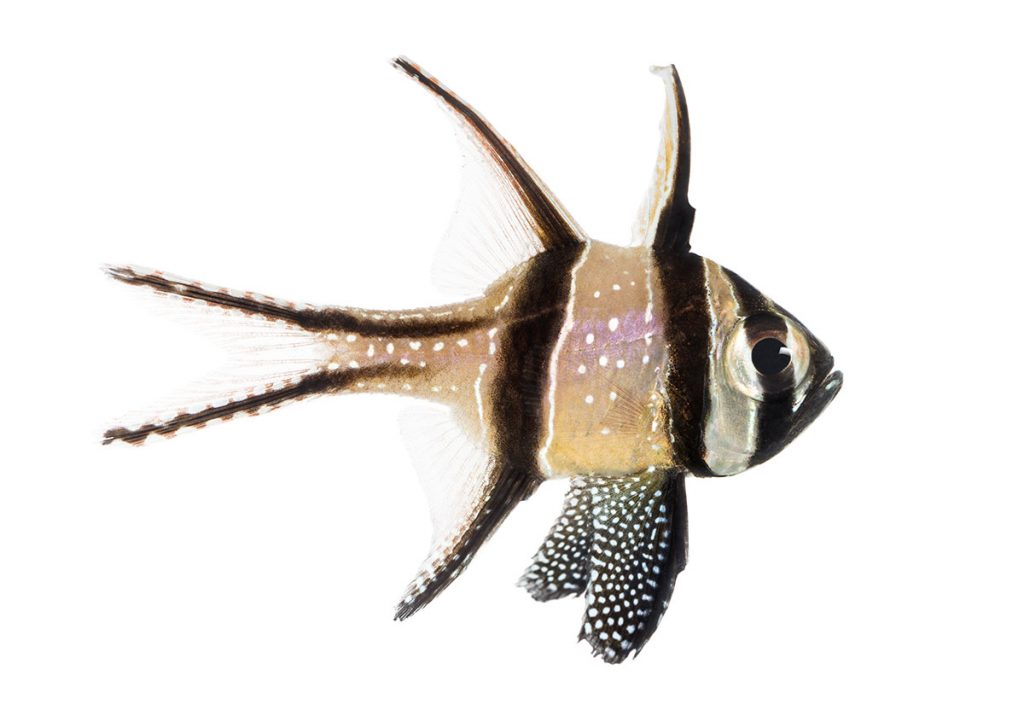Cardinalfish Species
The cardinalfishes are excellent aquarium inhabitants, often remaining relatively small and peaceful. As a general rule, they can be kept in groups, are considered reef safe and adapt well to captivity. Perhaps one of the most well-known members of this family are the bangaii and pajama cardinals, both of which are being aquacultured in large numbers for captivity.
Biology
One of the most unique aspects of cardinalfish biology is their habit of some species to shelter within the spines of sea urchins, or amongst the tentacles of some anemones.
Another very fascinating aspect of cardinalfish biology is their strategy for reproduction. Cardinalfish practice a very unique form of reproduction in which the male fish will hold and incubate the eggs in his mouth while they develop. Some species, such as the bangaii cardinalfish will hold the eggs until they have become quite well developed juveniles that resemble miniature versions of the adults!
Captive Care
Cardinalfish are in many ways the ideal marine aquarium fish. They are considered a very hardy, do not attain an overly large size, and require only a minimal territory. In addition, they are not considered aggressive fish and can be kept with members of their own species. Some species may exhibit aggression towards conspecifics during mating, so it is advisable top provide amble hiding spots in order to avoid the weaker fish becoming overly stressed.
In the wild cardinalfish consume primarily zooplankton, so it is advisable to recreate this diet in captivity through feeding high quality frozen zooplankton and pellets.
Many species of cardinalfish do not require a very large tank. However, it is important to consider carefully what species of cardinalfish may be best for you tank. While many species of cardinalfish do well in a small tank when kept individually, many species will benefit from being kept as groups in lager tanks.
Suggested Piscine Energetics Products
We suggest a diet based on Piscine Energetics Frozen Mysis, Piscine Energetics Frozen Calanus, Piscine Energetics Pellets (1mm and 2mm) and Piscine Energetics Saltwater Flakes.
What People Say
After feeding my seahorses your mysis for about 3 months; they are fat and happy!!! they give me baby seahorses (at least 300 ) each 14 days... So I'm very satisfied of your mysis.The frozen mysis is about 70 per cent of their diet.
Yvan Charbonneau Quebec
I am keeping these Indian mudskippers -- very cute -- about 3-4 inches long. I've been feeding them frozen bloodworm, and decided to try them on mysis. I feed them in a "shallows" in the 150 I have set up for them. The minute the mysis hit the water they were on it, frozen and all. They gorged until their little bellies were almost bursting. I have yet to see an aquatic creature that does not go absolutely nuts over PE Mysis.






